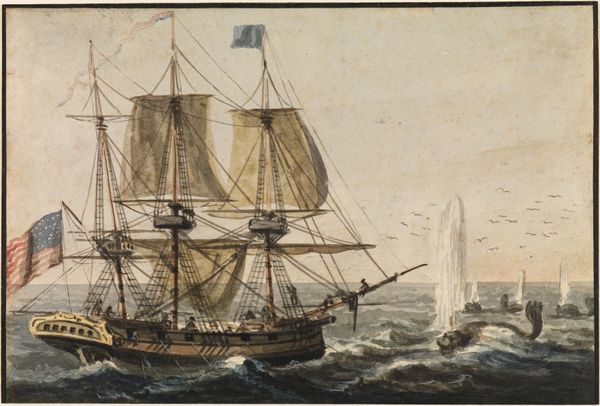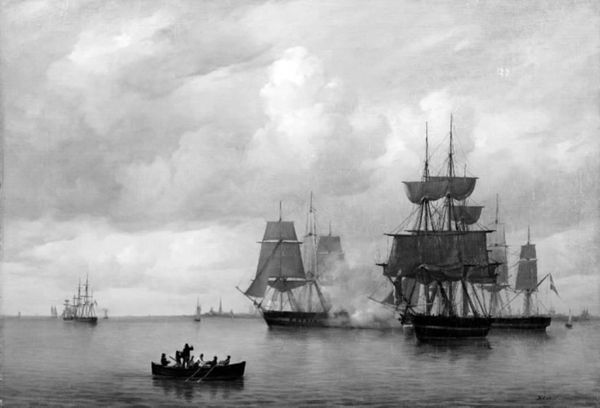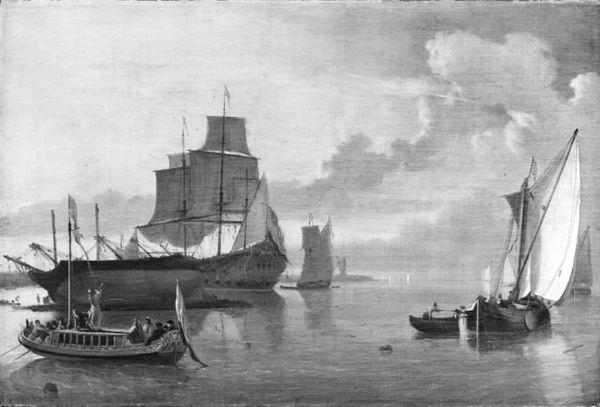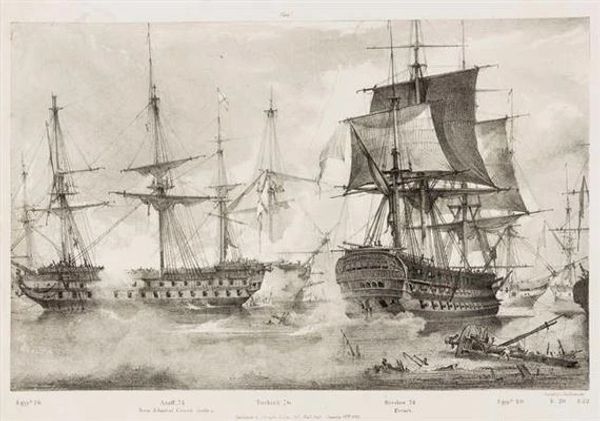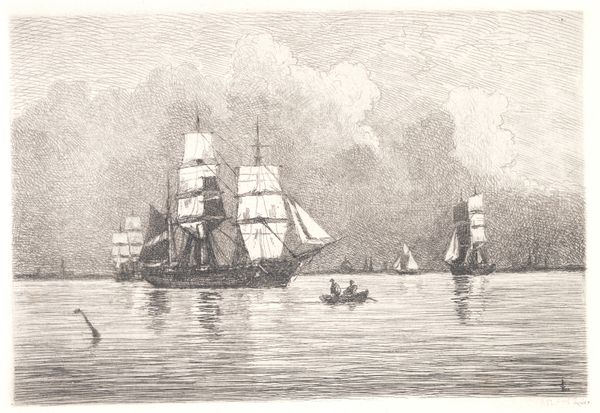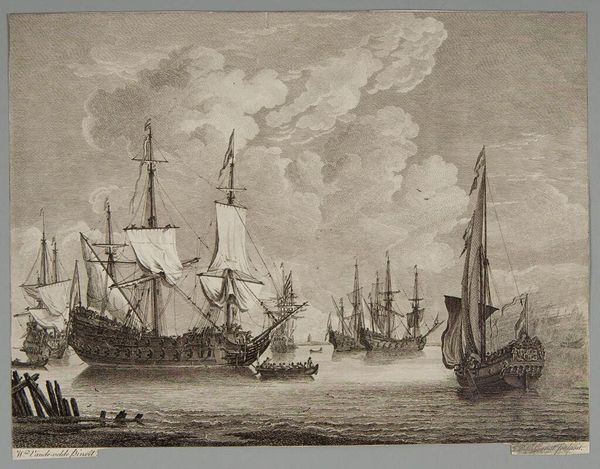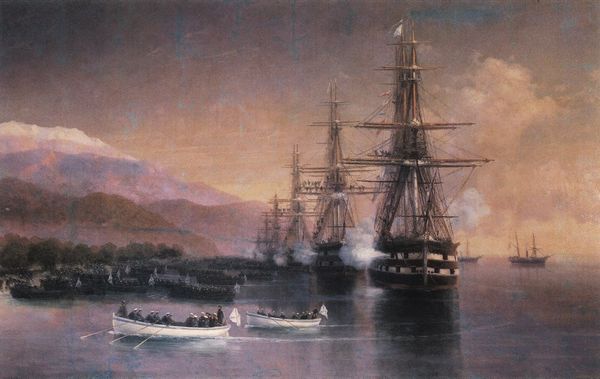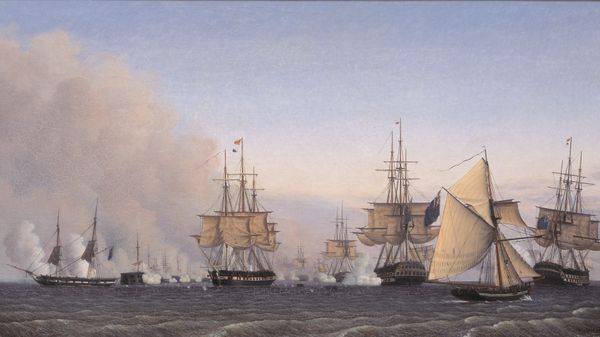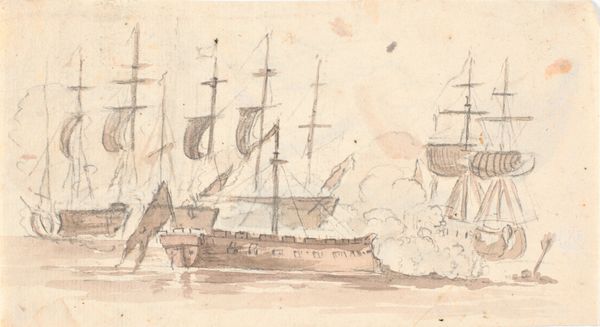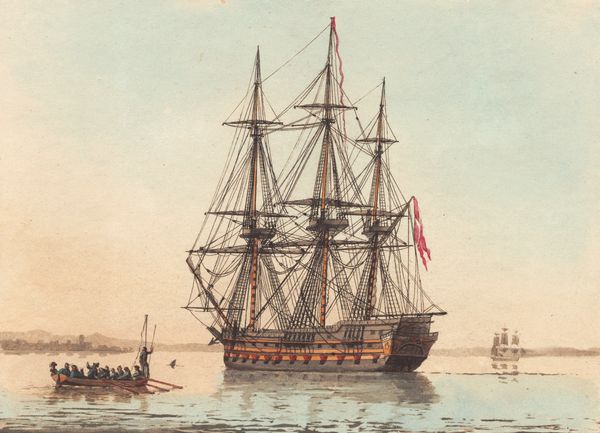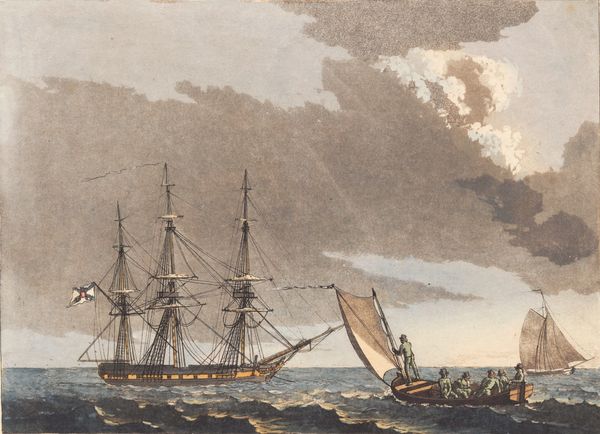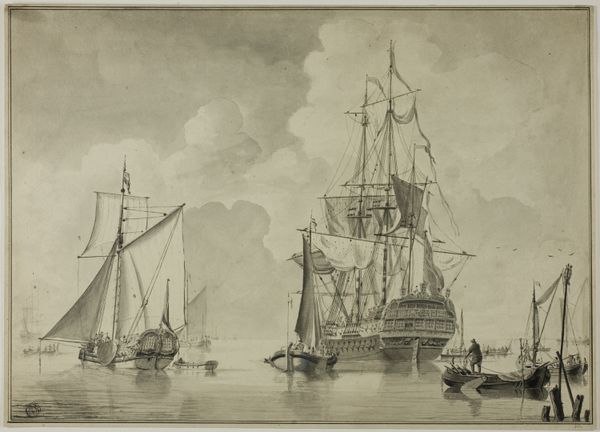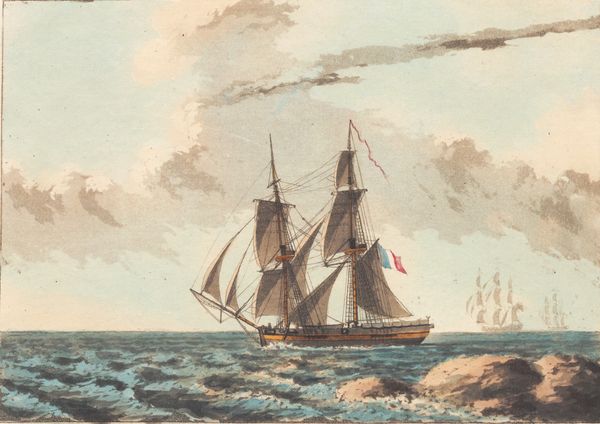
drawing, paper, ink
#
drawing
#
landscape
#
paper
#
ink
#
romanticism
#
line
#
cityscape
#
history-painting
Copyright: Public domain
Editor: So, this ink drawing on paper, "The Scipion on Entering the Harbour Ran Aboard the Brelots," made by George Philip Reinagle in 1828, definitely evokes a sense of chaotic naval conflict. I'm immediately drawn to the dynamic composition. How do you interpret this work in the broader context of its time? Curator: Given the 1828 date, and the nature of the depicted event, I see this piece as speaking volumes about Britain's maritime power and its projection in the early 19th century. History paintings during this era, even drawings, played a key role in shaping public perception of military events. Do you notice how the 'Scipion' dominates the scene? Editor: Yes, it's the largest ship, and centrally positioned. It really draws the eye. Curator: Exactly. That dominance, even the collision itself, can be read as a visual metaphor for British naval supremacy, but I wonder about the identity of 'the Brelots'. Could this collision have been a symbol of geopolitical friction at that time, particularly Britain's interactions with smaller or rival navies, perhaps even an event that reinforced a national narrative? Consider who this drawing was made for - how would it circulate, and what message might its owner wish to convey by displaying it? Editor: That's a great point. I hadn't considered who the drawing might have been made for. Curator: Consider also the style, rooted in Romanticism, the chaos, and the dramatic lighting all contribute to the construction of a spectacle meant for consumption. How does the artist romanticize or critique such an event? Does the rendering highlight the glory or underscore the danger inherent to naval engagement? Editor: Thinking about it now, the artist captures the raw power and, to some extent, even the violence inherent in naval conflict. Thank you, it's been enlightening to learn about the socio-political context embedded within the image. Curator: Likewise. Analyzing the visual narrative alongside its historical context allows for a richer, more nuanced understanding of the work's impact and intent.
Comments
No comments
Be the first to comment and join the conversation on the ultimate creative platform.
